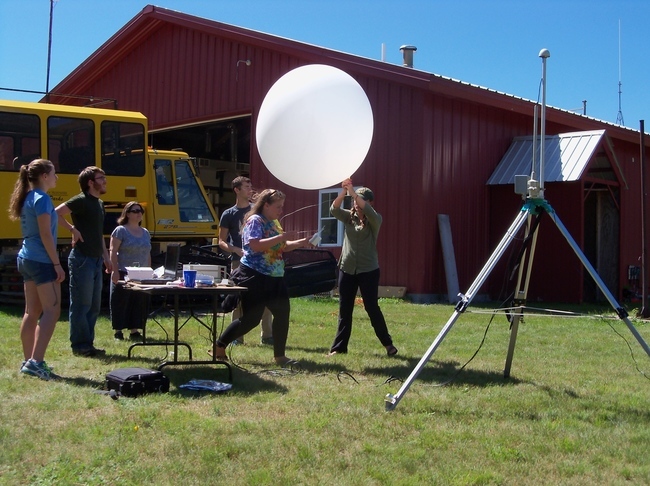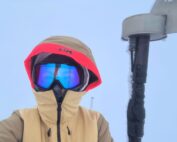The Air is Different Up Here
2018-08-23 15:30:21.000 – Eric P. Kelsey, Ph.D., Director of Research
If you have been to the summit of Mount Washington, you likely noticed that the air was different than in the valleys: the temperature was cooler, you may have been in a cloud, and you may have noticed with your eyes and olfactory that the air was more or less hazy and polluted. If you thought that you were in a different air mass than in the valleys, you were probably right.
For many decades, we have known that the summit of Mount Washington spends roughly half of the year in the lowest layer of the atmosphere, the boundary layer, and the rest of the time in the free atmosphere or the transition zone between these two layers called the entrainment zone. Victor Conrad, a Harvard University scientist, first estimated this indirectly in 1941 when he examined the time of day that the daily maximum and minimum temperatures occurred. When the summit air temperature peaked during the afternoon and is lowest at night like it typically does in the lower elevations, the summit is likely in the boundary layer along with everyone else in the region. When the maximum and minimum temperatures occur at other times of the day, there is an increased likelihood that the summit is in the free troposphere where horizontal changes in air temperature have a bigger influence on the timing and values of the maximum and minimum temperature. Using Conrad’s methods, Grant et al. (2005) ran this analysis with more recent data and concluded similar results: the summit is dominated by boundary layer processes 30% of the time and by the free troposphere 50% of the time (and inconclusive the other 20% of the time).

Schematic of the daily evolution of the boundary layer under clear skies.
Because the summit is subject to different air masses and atmospheric processes than the lower elevations roughly 50% of the time, it mak
Their findings have just been published in the open-access online journal Atmosphere (link to manuscript page here). The article focuses on a one-day intensive observation campaign on 19 August 2016 during which several interesting atmospheric processes were captured with MWO summit and mesonet observations (link to our mesonet page here), weather balloons launched from the base of the Auto Road, and vertical profiles of stable isotopes of water vapor and meteorological variables. We observed large scale subsidence from a high pressure system depressing the boundary layer height while sunshine was developing warm thermals that rose from the valleys to deepen the boundary layer. Observations above treeline caught this battle between these and other processes and has helped advance our understanding of how the boundary layer behaves around a mountain. These results are also guiding our approach for future research on this topic, including the processes we want to observe and the types of new instrumentation we need to observe them. In the near future, we aim to develop a statistical model based on summit weather observations and large-scale weather pattern that predicts the type of air mass at the summit. From this we will be able to reconstruct the summit air mass type going back to 1935 and understand how this variability in air masses at the summit impacts the long term slower warming trend at the summit.

Eric P. Kelsey, Ph.D., Director of Research
Supporter Spotlight: Ryan Shepard
Supporter Spotlight: Ryan Shepard By Ryan Shepard and Carissa Milliman Ever since I was a kid, living in Western New York and growing up with lake effect snow, I thought harsh weather was incredibly
Supporter Spotlight: Erik Rider
Supporter Spotlight: Erik Rider By Wendy Almeida For Erik Rider, supporting Mount Washington Observatory comes from a lifelong fascination with weather and how it shapes daily life. Growing up along the Massachusetts coast, he
An Autumn Above the Clouds on Mount Washington
An Autumn Above the Clouds on Mount Washington By Cassie Farnsworth I don’t know how many times in life you get to say “it was exactly what I hoped it would be,” but my


